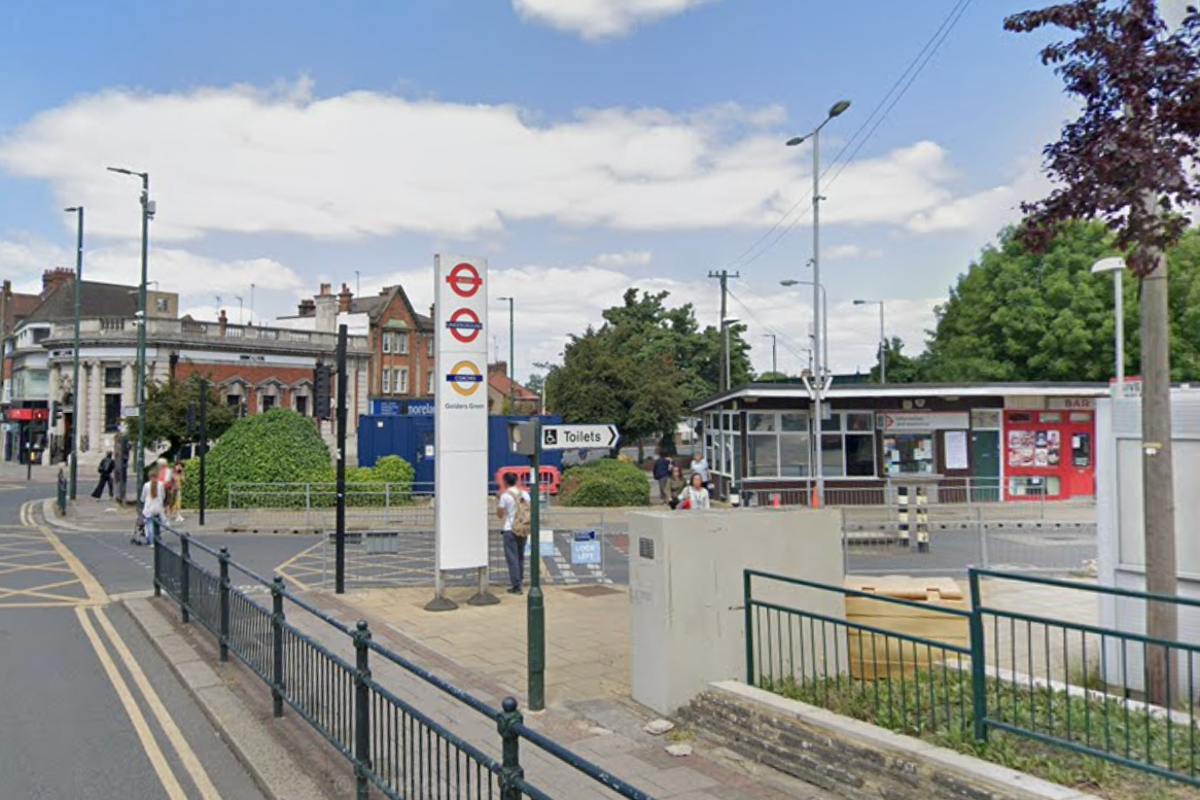 Sam Higgins
Sam HigginsPeople in a Welsh village were left baffled after St George’s Crosses, the symbol of England’s patron saint and the country’s flag, appeared around the area.
About 20 different signs around Henllys in Cwmbran, Torfaen, were painted over, with villagers coming together to clean them.
The council thanked residents for cleaning the graffiti, while Gwent Police said the incident had been reported and local officers were making inquiries.
It follows similar symbols being placed across England in August, as well as a police investigation being launched into the painting of the England flag on a roundabout in Llandudno, Conwy county..
Groups responsible for putting up the flags in England have told the they are motivated by pride and patriotism, but others have said it feels provocative at a time when tensions are running high over immigration.
About 15 residents who cleaned up the graffiti in Henllys said they feel “empowered” by their efforts, at a time when there is so much division.
Sam Higgins, 54, who co-led the clean up, said most of the “vandalism” was made up of St George’s Crosses, but swastikas were also found along a subway, alongside text which read: “Stop the boats.”
The swastika symbol, which was the emblem of the German Nazi political party, was also spray painted on public spaces in Maesteg, Bridgend county, in September, with a police investigation launched.
 Contributor photo
Contributor photoThe subway in Henllys is used by school pupils, and Ms Higgins described the vandalism there as “so wrong”, adding she “never thought” she would be scrubbing off a swastika in 2025.
Ms Higgins started getting messages about the markings, and alongside councillor Fiona Cross, gathered a group of residents to clean it up.
Those who painted the signage “want to divide” people, said Ms Higgins, but she believes the clean-up has sent a much stronger message.
 Sam Higgins
Sam HigginsThose taking part in the clean-up ranged from mums fitting it in before picking up the kids, to 20-year-olds wanting to do their bit.
“The bus stops have never looked so good,” Ms Higgins joked.
“Cwmbran is a new town, full of new people, we don’t want that here.
“It goes against everything we have built up.”
 Sam Higgins
Sam HigginsWhy are we seeing more flags?
The Lionesses’ Euros campaign saw displays of St George’s flags appear across England in July.
The weeks that followed saw a mixture of St George’s Crosses and union flags appear in the suburbs of Weoley Castle and Northfield in Birmingham, hanging from every lamp-post along several of their streets.
The flags were warmly welcomed by many people commenting on Facebook, and a group named the Weoley Warriors claimed responsibility.
They described themselves as a “group of proud Englishmen with a common goal to show Birmingham and the rest of the country of how proud we are of our history, freedoms and achievements”.
 Sam Higgins
Sam HigginsBut some Birmingham residents were uncomfortable with the motivations of some of those backing the Weoley Warriors’ crusade, as both flags have been exploited by some far-right political movements and demonstrations.
Since then, the flags have appeared on streets across England – in a movement known as Operation Raise the Colours.
Heavily fuelled by social media, people have been pictured using ladders to hoist the flags as high as possible, and a national campaign has been encouraging people to submit instances of the flags appearing.
Joseph Moulton, from York, is co-founder of the campaign Flag Force UK, and said the drive was about getting the country to unify under one flag.
However, Malcom Farrow is a vexillologist – someone who studies flags – and he said the reason some associate both the St George’s Cross and union flags with far right groups is because Britain has never been a nation that has flown flags often.
As a result, Mr Farrow believes different groups have since been able to hijack them as their own symbols.
More than £20,000 has been raised to support one campaign to put up flags in and around Birmingham, while more than 4,000 people have also signed a petition calling for the local authority to stop removing the flags.
St George’s Crosses have also been painted on roundabouts in Birmingham, Greater Manchester, Lincolnshire and Worcestershire, among others.
 Fiona Cross
Fiona CrossHenllys councillor Fiona Cross, who helped arrange the clean-up, said the “vandalism doesn’t represent the views of the majority, but a minority”.
“More concerningly the flag of a different home nation is being subverted and used to express a particular position, across the UK, not just in Wales,” she added.
Ms Cross said she has never experienced anything like this in Henllys, or across Cwmbran, and while she is “all for free speech and people having their say”, this is not the way to do it.
Torfaen council’s director of neighbourhoods and environment Mark Thomas said: “Thank you to the local community in Henllys for removing graffiti from the signs.
“Road signs are there to help inform road users and any unauthorised adornments or graffiti is a potential safety risk.
“Road signs that have been vandalised need to be cleaned and potentially recovered, which can be costly.”




